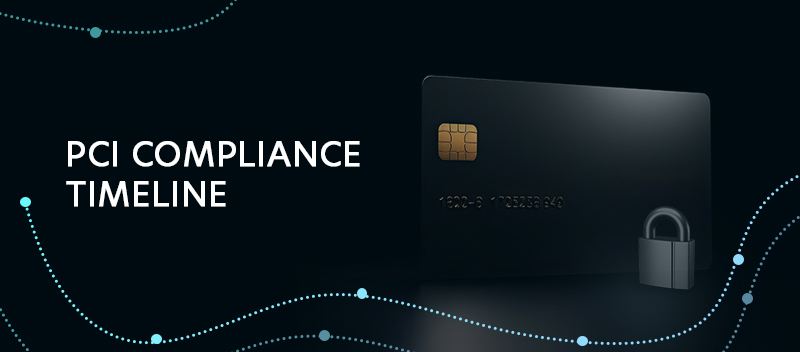PCI Compliance Timeline: How Long Does It Take?

Known as the Payment Card Industry Data Security Standard (PCI DSS), it is now globally recognized. Compliance with its provisions is required for all entities that process electronic payments.
PCI DSS Requirements
PCI standards apply to all users and systems elements involved in the cardholder data environment (CDE). There are 12 main compliance requirements that every business and company must meet:
-
- Protect cardholder data with a firewall that you regularly maintain.
- Change system defaults for all software and security systems.
- Implement procedures to safeguard the cardholder data you store.
- When transmitting data across open, public networks, mechanisms must be in place to encrypt it.
- Malware and virus protection with proper software and security.
- Secure systems and applications.
- Restrict access to cardholder data on a need-to-know basis.
- Implement measures to authenticate the identities of all users accessing your systems and information.
- Put physical mechanisms in place to restrict unauthorized access to data.
- Monitor and log all access to systems and data.
- Conduct regular tests of your security processes and systems.
- Write and maintain a comprehensive information security policy.
During the compliance process, each of these requirements must be described in terms of how it is defined, how it will be tested, and its objectives.
For more information on our PCI DSS compliance services, Click Here
PCI Compliance Levels
Complying with PCI DSS is not a one-size-fits-all proposition. There are four different compliance levels, each with its own set of conditions. They include the following:
-
- Level 1. Businesses that process over 6 million transactions annually. Because of their size and volume of transactions, organizations in this category must meet additional security requirements, e.g., a full on-site assessment by a Qualified Security Assessor and the completion of a Report on Compliance showing that they are adhering to credit card security measures.
- Level 2. Medium to large organizations that process between 1 and 6 million payments. They must conduct an annual PCI self-assessment.
- Medium to small businesses that process between 20,000 and 1 million transactions. A PCI self-assessment must be conducted annually, and a quarterly scan must be performed by a Qualified Scanning Vendor.
- Smaller entities that process less than 20,000 payments. While these companies must remain PCI compliant at all times, they are not required to file reports.
Clearly, the large corporations qualifying as level 1 entities possess systems environments and protective measures that are infinitely more complex than their smaller counterparts. As a result, a PCI DSS compliance assessment for a level 1 firm would take much longer than a much simpler compliance evaluation for a level 3 or 4 company.
Adhering to the many requirements of PCI DSS is a complex process that means different things to different companies. In all cases, however, one fact remains true: avoiding the assessment is a bad idea that can lead to heavy fines and even bar your company from accepting electronic payments. The PCI compliance process can take from one day to two weeks, depending on your systems, company size, and the time you take to do the self-assessment.
Once you have done so, you will undergo a PCI compliance scan and send the results to your merchant bank, which will pass them on to the payment card industry. While compliance may seem like just one more unnecessary bureaucratic ordeal, the data protection and assurance it provides to you and your customers are worth their weight in gold.
Navigating PCI Compliance with Confidence
PCI compliance is more than just a checklist — it’s a cornerstone of trust and security.
Why it Matters
-
- Data Protection: Protects your sensitive payment info from being breached.
- Customer Trust: Builds trust with your customers by showing that you value security.
- Business Integrity: Protects your business from fines and reputation damage.
How to Achieve PCI Compliance
-
- Assess and Analyze: Start by understanding the specific PCI DSS requirements for your business.
- Plan and Implement: Create a plan to address each standard.
- Monitor and Maintain: Review and update security often to stay ahead of threats.
Overall, achieving PCI compliance is not just a regulatory requirement; it’s a strategic business decision.




